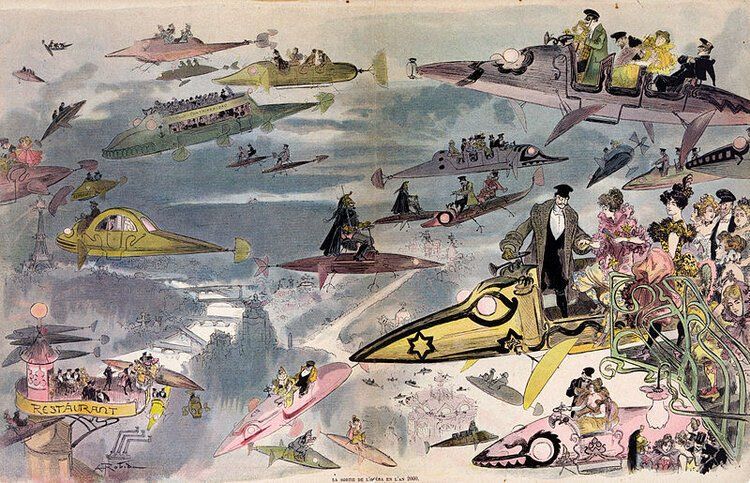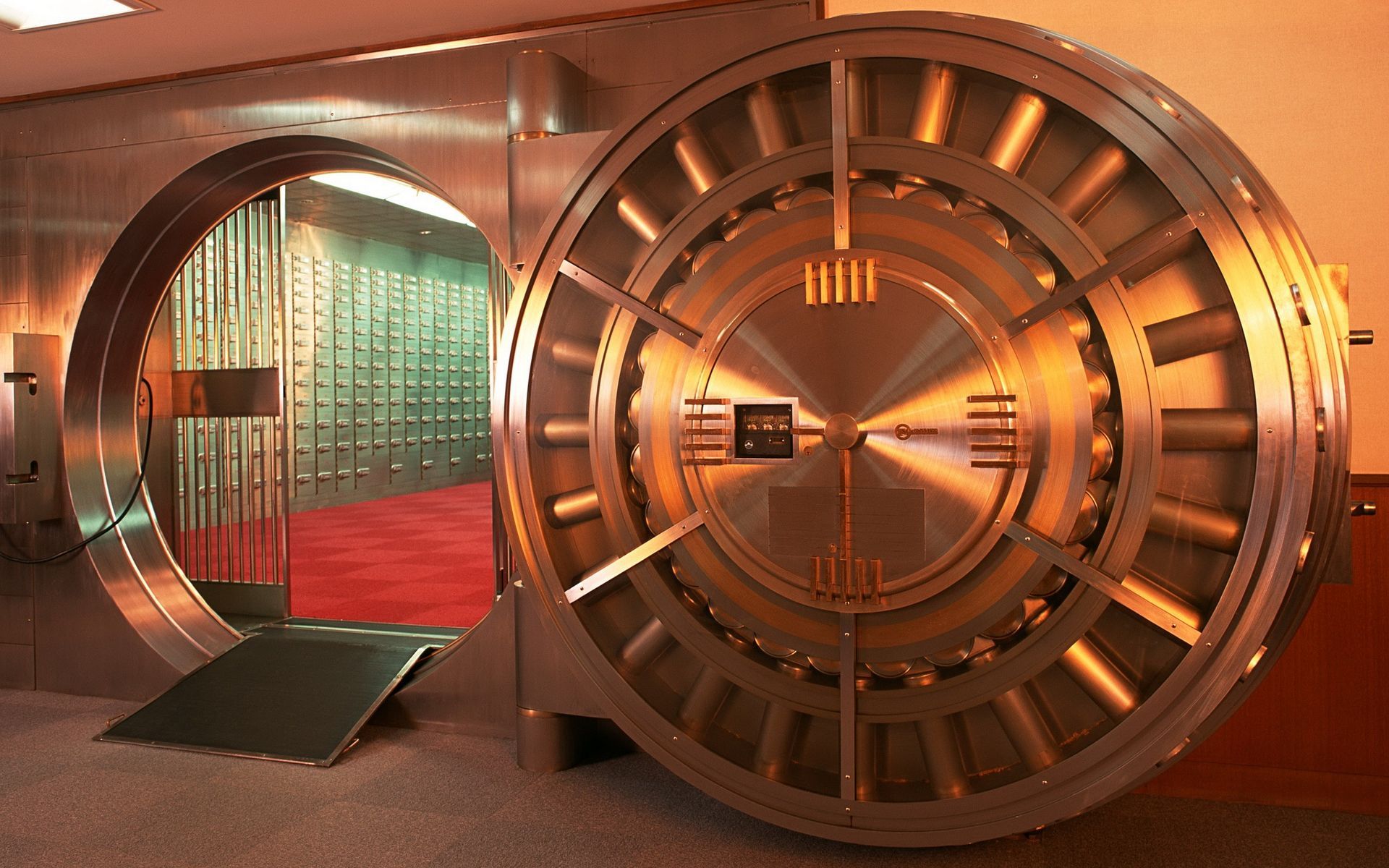The key ingredients for an innovation driven organization
Many organizations seek innovation, but very few know how to find it.

Every company strives to be innovative, but most are missing key ingredients. How can you identify which ingredients your organization needs — and which employee styles can fill in the gaps? We distill four key innovation styles that can lead to success — generators, conceptualizers, optimizers, and implementors — and explains how common they are across sectors. Then, they outline a four-part framework for ensuring your team or organization has all four styles represented.
How do you identify and empower innovators in your company?
Collectively, we have spent over 40 years researching this question. Our research on innovation styles identifies and examines the different preferences and roles people take on when pursuing innovation. By understanding this concept, organizations can better identify where specific people are needed and who should work together to generate new breakthrough ideas.
Our latest study relies on data collected between October 2006 and January 2021, across as many people in as many organizations as possible.
Each respondent told us about what they like to do and what they do well when they solve problems (and what they do not like or do not do well). These answers revealed an individual’s preference for one of four unique innovation styles, each of which maps onto a distinct phase of a four-stage innovation process. Each style has a role to play in your organization, starting with finding new problems (generators), thoroughly defining problems (conceptualizers), evaluating ideas and selecting solutions (optimizers), and implementing selected solutions (implementers).
All four styles are necessary for innovation. Understanding which employees fall into which style enables an organization to manage their innovation efforts more effectively. However, in our experience, most organizations are lacking in some innovation styles — particularly generators — and we will be providing steps to help overcome this deficiency.
The Four Innovation Styles, Defined
- Generators: Generators find new problems and ideate based on their own direct experience. For them, physical contact with, and involvement in, the real-world alerts them to unresolved gaps and inconsistencies — problems that might be worth addressing as opportunities and possibilities. However, generators only find these problems at a high level; they do not necessarily gravitate towards articulating a clear understanding of a problem’s specifics or its potential solutions. Across all organizational levels, generators are rare. Overall, just 17% of our sample were generators: 19% of executive managers, 18% of middle managers, 15% of supervisors, and 16% of non-managers. This means that, unless leaders are deliberate about including generators on teams, they may not be represented at all. Generators are perceptive of the world around them, and initiate and proliferate opportunities. So, a lack of generators makes it more likely that an organization will miss opportunities for valuable change. Given the importance of cognitive diversity in groups, this is a potential detriment to innovation performance. That said, there are some occupations where generators are more common than others. School teachers (56%), academics (38%), and artists (34%) are the occupations with the greatest proportion of generators; engineering (8%), strategic planning (9%), and manufacturing (9%) have the lowest proportion. This means a lack of generators may be acutely felt on certain teams in certain fields. For instance, there is a 71% chance a four-person team from a strategic planning department has no generators at all.
- Conceptualizers. Conceptualizers define the problem and prefer to understand it through abstract analysis rather than through direct experience. Like generators, they like to ideate; but in contrast they prefer to model the problem clearly — integrating the various parts, relationships, and insights together — which can then be used as the basis for one or more solutions. Conceptualizers are the second rarest innovation style, making up only 19% of the sample. They are relatively evenly represented across most occupational levels, with 17%, 18%, and 17% of non-managers, supervisors, and middle managers as conceptualizers, respectively. But more executives — 25% percent — are conceptualizers. This likely reflects the specific cognitive demands for that role: executive managers must strategically plan for more distant goals, rather than execute more tactical tasks. Conceptualizers are most common in jobs where understanding the definition of the problem is vital, such as organization development (61%), strategic planning (57%), and market research (52%). Conversely, conceptualizers are rarest in operations (7%), technical support (11%), and project management (13%).
- Optimizers. Optimizers evaluate ideas and suggest solutions. They prefer to systematically examine all possible alternatives in order to implement the best solution among the known options. Optimizers are most common among lower occupational levels (27% of non-managers) and decrease with a rise in occupational levels (23% of supervisors, 22% of middle managers, and 20% of executives). Because most solutions are implemented at lower levels of hierarchy, it makes sense that occupations at these levels are more likely to engage in optimization. Optimizers are also most common in positions where practical, precise, and detailed plans, processes, and solutions are sought. Engineering (43%), manufacturing (38%), and finance (36%) had the highest proportion of optimizers. Product developer (9%), academic (10%), and school teacher (11%) had the lowest proportion.
- Implementers. Implementers put solutions to work. They enthusiastically (and sometimes impatiently) take action, experimenting with new solutions before mentally testing them and then make adjustments based on the outcome of these experiments. Implementers are the most common innovation style, representing 41% of our survey respondents. Thirty six percent of executive managers are implementers, but are about as common among non-managers (41%), supervisors (44%), and middle managers (43%). Individuals working in positions that require achievement of short-term results, such as IT operations (64%), customer relations (51%), and administration (50%) favor the implementer style. Artists (6%), strategic planners (7%), and designers (10%) are least likely to be implementers.
Challenges for Organizations
Two findings should stand out to managers. First, innovation styles are, generally, not evenly distributed. It is striking that only about 17% of individuals in our study were found to be generators while 41% were implementers. Second, people tend to sort into different occupational roles and levels of management based on their innovation style. For instance, generators are predominantly found in non-industrial occupations and conceptualizers are most common in strategic planning and organizational development.
These two findings contribute to the same problem: the organizations and teams you are working with are likely to lack the right balance of styles and be insufficiently cognitively diverse. If cognitive differences are unevenly distributed (e.g., there are more implementers and fewer generators) — and if people will choose roles and organizations based on their innovative style preference (e.g., generators are more likely to become artists and teachers, not executives and engineers) — we would expect most organizations and teams to lack the ideal cognitive diversity for innovation.
SMRT Innovation Framework
To innovate more effectively, organizations need to do two things: specifically, cultivate more generators who can find problems; and more generally, ensure skillful representation of all four innovation styles. To do both, we propose a four-step method for innovation that we refer to as the “SMRT” framework:
- Structure: Achieving the right ratio of innovation styles.
- Model: Demonstrating importance of an innovation style top-down.
- Reward: Creating incentives for problem-finding.
- Train: Creating opportunities to learn about all styles.
The best-in-class organizations we identified exemplify these tactics. While it was rare that any one company in our research deployed more than one of these four, we argue that these tactics are complementary and that using all four will supercharging innovation at your firm.
1) Structure.
Managers and their teams tend to get stuck when attempting to solve complex, ill-defined problems because there is a wide divergence in potential solutions. If managers can identify and isolate the exact stage of the innovation process where they are facing this divergence, they might have some sense of the talent they need to converge towards a solution. But since they are rarely able to do this, it means that managers do not have the right team structure for these situations in the first place.
To improve innovation, managers will first want to ask: During which stage of the innovation process do our teams get stuck? Next, managers will need to identify and amplify the missing innovation style that’s needed at that stage. For instance, during a field experiment in a Google hackathon, we found that agile practices stymied innovation because they focused teams on the implementation phase of the innovation process, rather than the idea generation phase. In this type of situation, an organization might benefit from intentionally identifying generators and deliberately amplifying their contributions. If no generators are available, other team members may be asked to role-play as generators instead.
Even if your team struggles with optimization or implementation, this doesn’t have to prevent you from innovating. Take the experiences of a strategy development team for a large American health insurance company. Tasked with recommending a new corporate strategy to senior management, the team was unable to agree on a final recommendation and was struggling with paralysis by analysis. Each time they thought they had a recommendation to forward, someone insisted on revisions to take new information into account or to make the strategy more comprehensive. When we analyzed their innovation profile, we found the team to be composed entirely of conceptualizers, except for one implementer — the administrative assistant. Rather than try to reach a perfect understanding, the team diversified its membership by including people with an affinity for optimization and implementation to help them reach a strategy acceptable to management.
2) Model.
Our research finds that because organizations tend to incentivize and select people with specific innovation styles. For example, organizations that need to get to market hire implementers and incentivize implementation behaviors; organizations that need product improvements hire optimizers and incentivize optimization behaviors; and so on. Yet, the innovation process requires all four innovation styles, or organizations risk succeeding in one area of innovation while failing on another.
Senior leaders, therefore, have a challenge (and an opportunity) to demonstrate the importance of the needed-at-the moment style — top down — to their entire organization. This is possible because an innovation style is a cognitive state and not a fixed personality trait and can be learned from training. In fact, a leader’s specific style is less important than their ability to shift, as needed, during the flow of the innovation process.
Consider Elon Musk and the role he plays at SpaceX and Tesla. At SpaceX, Elon Musk has largely exhibited a generator style: he is well known for blowing up rockets in order to find out how they work (and why they do not). He has even normalized the activity by referring to rocket explosions as “rapid unscheduled disassembles” (RUDs). By modeling the importance of generator behavior, he encourages and allows his SpaceX team to do the same. Yet, which innovation style is mission critical can change over time. At his other company Tesla, the challenge today has become innovating on how to manufacture at volume. This innovation requires an optimization mindset. Thus, Musk demonstrates the optimizer style at Tesla: when Model 3 production was drastically behind schedule, Musk was public about sleeping on the factory floor and handling direct oversight over Model 3 production.
Some leaders in our sample demonstrated an exceptional capacity to shift during the innovation process, resulting in substantial organizational performance improvements. For example, like air traffic controllers, many firefighters intensely err towards implementation. In their daily problem-solving activities, they confront situations that need their immediate action towards saving lives or resolving dangerous situations.
But in one department we studied, the new fire chief and his lieutenants felt they had antiquated views and lacked a vision or strategy for the future. As mostly implementers, the team was struggling to create a new strategy — a task that tends to be conceptualizer work. Through modeling behavior by the new fire chief, however, the team established its vision of becoming an elite department. This started by the new fire chief developing a survey questionnaire to distribute to department members as a fact-finding tool (modeling generator behavior). Leading a two-day workshop, the new fire chief and his lieutenants worked with department members to develop a long-term vision supported by six action pillars (modeling conceptualization and optimization). Committees were then created to drive each action forward (modeling implementation).
Cycling through these behaviors allowed the new fire chief to work methodically through the process with his employees to create a strategy they all bought into. As a result, the department aligned funding to increase their staffing and implemented a dual career system to reward/support individuals wanting to specialize in core competencies like hazmat emergencies, medical response, and other core specialties. This allowed them to build higher mastery level versus other departments and gain such recognition from peers.
3) Reward.
Because employees are rewarded for doing their job well, they tend to go out of their way to avoid problems which are outside of their job description. This also means they go out of their way to avoid finding new problems, particularly problems that are more complex, require them to do more work, or require them to work with different departments. This behavior is so prevalent that some researchers have deemed the activity of problem-finding “extra-role behavior” — one that requires individuals to go beyond the boundaries of their jobs.
Our field studies suggest that there is a clear solution to this limitation: companies should make problem-finding attractive for employees by offering rewards for this activity, beyond and in addition to just providing them with the freedom to do it. In 2020, The Wall Street Journal called 3M’s 15% rule, which invited employees to spend 15% of their time working on pet projects, as “Corporate America’s Most Underrated Innovation Strategy.” In addition, 3M makes problem-finding a component of every employee’s job description by delegating responsibility, encouraging considerable tolerance of mistakes, and ensuring that at least 30% of each division’s revenues comes from products introduced from the last four years.
Having given employees that level of freedom, 3M can then explicitly reward problem-finding in a number of ways. Their “Duel Ladder System” of advancement allows employees to choose one of two parallel ladders on which to progress their careers — both with equal pay and benefits — one side of which is responsible for advancing science and products and the other side for managing people. This incentivizes employees to direct their talent where they can do the most good and removes disincentives bright researchers may have about stepping away from science (and it avoids bright researchers from turning into bad managers). 3M’s prestigious “Carlton Society” honors, often called the “3M Nobel Prize,” also recognizes those who have radically reshaped an industry. Importantly, nominations come from co-workers, and not from company management as would be typical in most firms. Problem finding is so rare in our study, that we suggest all companies create incentives that encourage employees to take part in problem finding.
Another example, from our research, involved a large engineering company serving the airline industry that was having difficulty finding new products and markets to grow. During training sessions to familiarize employees with the innovation process, we determined that the majority of employees were implementers — and not a single person was a generator. This was reflected in the corporate motto “We’re on It,” which rewarded taking action to fix short term problems. To rectify the situation, the company instituted a brand-new reward system that encouraged employees to create new product or market ideas. In this system, 100% of all projects that fell under these categories were funded by the head office; prior to this, business units had to use their own budgets.
4) Train.
Most business (and business school) training steers future corporate leaders towards a preference for optimization and implementation. Why? Because they tend to present future leaders with problems that we’ve already solved (the frameworks are retroactively fitted to problem-solution combinations). Dating back to 1973, management thought leader Henry Mintzberg showed that managers spend most of their time doing short-term tasks. In other words, and as our own research found, most managers are implementers. But that can change.
For instance, one way to train people is by exposing them to problem-dense environments. In a study of Japanese companies, we found that in the best performing organizations engineers and scientists hired into the R&D department began their careers in sales, not the R&D department. When we asked why, they said, “We don’t want them to think that we are going to give them problems to solve. We want them to learn the problems of the customer.” These companies also developed effective employee suggestion systems by training their employees “to be dissatisfied” with their workflow and the current way of doing this. The problems they identified in these areas were then termed “golden eggs” — opportunities for innovation and improvement — for teams to solve. The results were tracked and celebrated on a regular basis.
Another group of participants in our study benefited from an unusual type of on-the-job training. A team of managers at a fast food chain included 17 implementers, four optimizers, two conceptualizers, and two generators. Once they realized they were trying solutions without slowing down to find and define the right problem, the team changed their behavior. They relaxed their deadline for solutions and spent more time on finding facts and forming a big picture—conceptualizer and generator behaviors. While there was a number of ways to shift the team mindset from implementation to conceptualization and generation, in this case managers did this by taking shifts serving customers. Solutions were found after previously unknown problems were discovered and defined, resulting in implementation in less time than provided by the original deadline. In effect, the team created conditions — serving customers — that enabled them to think more like hands-on generators and insightful conceptualizers.
Finding Innovation
Many organizations seek innovation, but very few know how to find it. We have proposed a blueprint that leaders can follow by implementing structures, rewards, and training, as well as modeling the power of the different styles of the innovation process.
While each innovation style is critical, it is important for leaders to recognize, protect, encourage, and reward employees who are generators. But perhaps the most important factor in finding innovation is a change in mindset. Rather than viewing problems as negative obstacles, leaders can help employees see problems as opportunities for innovation — and see themselves as possessing four key behaviors that can lead to success.
***
Alessio De Filippis, Founder and Chief Executive Officer @ Libentium.
Founder and Partner of Libentium, developing projects mainly focused on Marketing and Sales innovations for different types of organizations (Multinationals, SMEs, startups).
Cross-industry experience: Media, TLC, Oil & Gas, Leisure & Travel, Biotech, ICT.











